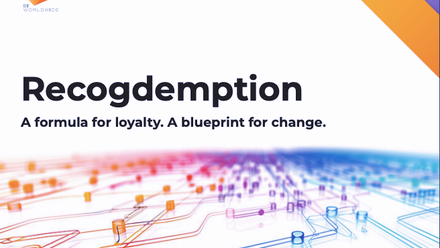What’s the difference between employee reward and employee recognition?

Employee reward
Though referring to employee reward as “essentially pay” might be simplistic – the concept of reward has developed over the past decade to incorporate much more than just salary – the two go hand-in-hand and play an important role in attracting, retaining and motivating employees.
Today employee reward can incorporate everything from salary and bonus to a huge range of benefits, including everything from employee discount schemes and concierge services to pension schemes, private healthcare and company cars.
Though most elements of an employee reward scheme have a financial aspect, non-financial rewards are common and are becoming increasingly so. These include learning and development opportunities, flexible working and the like.
Employee recognition
Employee recognition is the activity organisations engage in to acknowledge exceptional performance and encourage specific values or behaviours. Ultimately it’s about saying thank you – literally, or with a gift or award – to employees for exhibiting certain behaviours in the workplace, whether that be loyalty, hard work, showing integrity or just doing a really good job.
Given that you can align your employee recognition strategy directly with the objectives and needs of your business (being very clear about which staff behaviours and performances are being recognised), employee recognition can have a big impact on workplace culture and your broader HR strategy.
However, it’s not just about workplace culture and values. Distinct from employee reward, recognition has an important role to play in motivating and engaging staff. Compared with employee reward, there is often less of an emphasis on money – some of the best examples of employee recognition don’t cost a penny and this is as true with high-paid employers as it is with those on modest salaries. As is often said, “a banker earning £300k might not appreciate a £150 bonus, but a thank you letter and bottle of champagne from the CEO, can have huge positive and long-lasting impact”.
Why does it matter?
Understanding the differences in your reward and recognition strategy can make a big difference to your broader HR thinking. Crucially it allows you to ask the sort of informed questions that will influence your strategic planning and budgeting. For example: what are the goals of your recognition strategy? Why do you have the benefits and rewards that you have? What are you spending in total reward and what value does this bring to your organisation? How does this compare with your peers and competitors?
The answers to these questions allow you to consider bigger picture issues. Take, for example, the issue of trying to improve operational performance. It’s crucial to understand the role that your reward package (salary, bonus and benefits) has to play compared with that of your employee recognition strategy. We are working with a growing number of organisations that are realising that if they allocated just a small percentage of their reward package (eg bonus pool) toward employee recognition initiatives such as learning and development, they can make a huge difference to the success of their business.
For more information on how to build an effective employee recognition strategy download our free e-book.
Author is Jamie King, director of global reward at Xexec.
This article was provided by Xexec.
Supplied by REBA Associate Member, Xexec
Xexec is the UK's leading Reward and Recognition and Employee Benefits provider.







